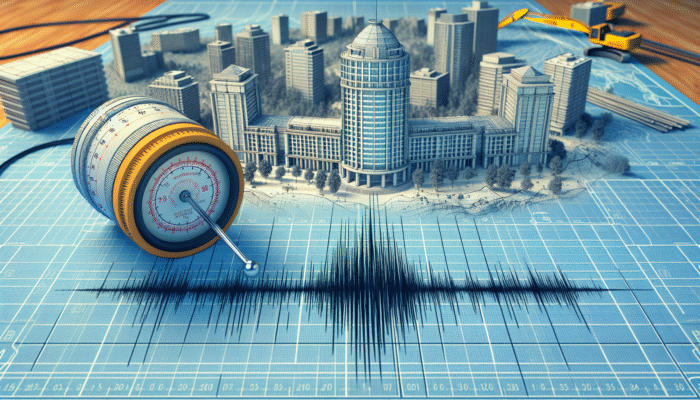Boost Your Community’s Safety Through In-Depth Understanding and Management of Disaster Risks
Disasters strike without warning, causing significant upheavals in communities and often forcing many individuals to flee their homes. It is crucial to pinpoint the specific hazards that vary from one area to another; this knowledge is essential for crafting a comprehensive disaster preparedness plan. Understanding the diverse threats—ranging from natural calamities such as hurricanes, earthquakes, and wildfires to human-induced crises like industrial accidents and acts of terrorism—is a pivotal first step toward ensuring the safety of lives and protecting property from the devastating impacts of unforeseen disasters.
Conduct a Thorough Risk Assessment of Regional Hazards to Enhance Community Safety

The world displays an array of environments and cultures, each presenting its unique set of risks. Coastal regions, for example, often contend with the menace of hurricanes, which typically bring intense rainfall and strong winds. Cities like New Orleans in the USA, which have previously faced catastrophic flooding, underscore the urgent necessity for a robust disaster preparedness plan that effectively addresses these specific risks. On the other hand, nations located along the Pacific Ring of Fire, such as Japan and Indonesia, are particularly vulnerable to seismic activity, highlighting the pressing need for earthquake preparedness strategies tailored to local conditions and experiences.
In rural communities, the threat of wildfires can be especially pronounced, particularly in areas like Australia and California, where extended dry seasons amplify the risk of fire outbreaks. Recognising these dangers goes beyond mere acknowledgment; it requires a comprehensive examination of how these catastrophic events can escalate and affect both local and global communities. Conducting a detailed hazard assessment is vital for pinpointing high-risk areas, which in turn enables the prioritisation of resources to support those who are most vulnerable and in urgent need of assistance.
Analyze Community Vulnerabilities to Customize Disaster Preparedness Strategies
Vulnerability is a complex and multifaceted concept—certain demographic groups are intrinsically more at risk during disasters due to a variety of factors, including socio-economic status, geographical location, and the resilience of local infrastructure. For instance, low-income communities often lack the necessary resources to adequately prepare for disasters, making them more susceptible to adverse impacts. Evaluating these vulnerabilities requires a comprehensive analysis of multiple elements, such as population density, infrastructure quality, and community resilience levels. Informal settlements, which are often found in urban environments, typically fail to meet the construction standards needed to withstand disasters, accentuating the urgent need for tailored disaster preparedness plans that accurately reflect local conditions and realities.
Moreover, special attention should be directed toward elderly individuals and those with disabilities, who may face unique challenges during evacuations or while sheltering in place. By conducting meticulous vulnerability assessments, planners can develop targeted interventions, ensuring that every member of the community receives the essential protection and support throughout the entire disaster management lifecycle.
Identifying Risk Exposure Levels: A Fundamental Element in Disaster Preparedness
Assessing the extent of exposure to various disasters is a crucial aspect of a successful disaster preparedness plan. Risk exposure can be evaluated through historical data analysis, geographical assessments, and predictive modelling methods. For example, regions frequently affected by flooding can utilize historical flood maps and climate predictions to gain a clearer understanding of future risks. This comprehensive analysis should concentrate on prioritising the most at-risk populations, ensuring that those most exposed receive the vital resources and attention necessary to enhance their resilience against potential disasters.
Communities such as Bangladesh, which routinely face monsoons and cyclones, have implemented sophisticated risk exposure assessments to prepare effectively for looming disasters. This proactive approach not only saves lives but also significantly mitigates economic losses, making it essential for communities worldwide to adopt similar frameworks and strategies in their disaster preparedness endeavors.
Developing Effective Risk Mitigation Strategies to Enhance Community Safety

Once potential hazards, vulnerabilities, and levels of risk exposure have been identified, the next critical step is to formulate effective risk mitigation strategies. These strategies encompass proactive measures aimed at decreasing the probability of disasters occurring and lessening their overall impact on affected populations. For instance, in earthquake-prone regions like Chile, stringent building regulations have been established to ensure that structures are capable of withstanding seismic events, thereby safeguarding residents and their properties.
In addition, natural barriers can be reinforced or restored to reduce flooding risks; wetlands, for example, act as natural buffers, absorbing excess water during severe storms. Public education initiatives also play a pivotal role in these strategies, equipping communities with the crucial knowledge needed for effective response before, during, and after a disaster strikes. By fostering a culture of preparedness, communities can significantly boost their resilience against the challenges posed by disasters.
Create an All-Encompassing and Integrated Disaster Preparedness Strategy
Establishing a cohesive and comprehensive preparedness strategy is paramount for ensuring community safety during disaster events. The focus should be on collaboration, resourcefulness, and proactive planning, all of which are essential components of an effective disaster preparedness plan.
Implement Robust Early Warning Systems for Timely Disaster Notifications
Early warning systems are vital to a successful disaster preparedness strategy. The implementation of systems that provide timely alerts can significantly affect outcomes during crises. The role of technology in this context is paramount. For example, countries like the Philippines utilize SMS alerts, sirens, and social media platforms to keep citizens informed about approaching storms, enabling them to take the necessary evacuation steps promptly.
Furthermore, incorporating local expertise into early warning systems can greatly enhance their effectiveness. Community members often possess invaluable insights regarding local weather patterns and historical disaster occurrences. By merging technological advancements with local knowledge, communities can develop robust early warning systems that not only save lives but also mitigate potential damage and disruption during disasters.
Develop Comprehensive Emergency Response Plans for Various Scenarios

An effective emergency response plan must clearly delineate actions to be taken during a disaster. This plan should outline evacuation routes, identify shelters, and detail communication strategies to keep residents informed and safe throughout the emergency. For instance, cities like San Francisco, which are at risk from earthquakes, have developed meticulous response plans that encompass everything from the coordination of emergency services to public health considerations.
Moreover, these plans should clearly define the roles and responsibilities of local authorities, non-profit organisations, and volunteers, ensuring that everyone understands their duties during a crisis. With a well-defined emergency response plan, communities can respond swiftly and decisively, reducing confusion and chaos in critical situations.
Implement Training and Educational Programs to Cultivate Community Readiness
Regular training and educational initiatives are essential for strengthening community readiness and resilience. These initiatives can take various forms, from practical drills simulating disaster scenarios to workshops focusing on foundational first aid and emergency response techniques. Communities that prioritise training tend to be better equipped to manage disasters when they arise.
For example, programs like CERT (Community Emergency Response Team) in the United States train citizens to assist first responders, promoting a culture of community resilience. By incorporating such initiatives into their preparedness strategies, communities empower individuals to take decisive action during emergencies, thus reducing their reliance on external aid in critical situations.
Conduct Comprehensive Risk Assessments for Continuous Improvement in Preparedness
Regular risk assessments are vital for refining and enhancing preparedness strategies. By consistently evaluating potential hazards and vulnerabilities, communities can adapt to changing conditions, ensuring that their disaster preparedness plans remain effective and relevant over time.
Data collection and analysis are key components of this process. Employing Geographic Information Systems (GIS) technology allows for precise mapping of risk areas, revealing trends that may indicate emerging threats. With updated assessments, communities can allocate resources more efficiently and prioritise their preparedness efforts, thereby reinforcing overall resilience against disasters.
Secure Essential Resources and Funding for Comprehensive Preparedness Initiatives
Implementing a robust preparedness strategy necessitates a solid financial foundation. Securing funding can be challenging, but innovative partnerships and diverse funding sources can greatly facilitate success. Collaborations between governmental bodies, NGOs, and private sector entities can create opportunities to enhance financial resources designated for disaster preparedness initiatives.
For instance, public-private partnerships have proven instrumental in financing early warning systems and upgrading infrastructure in numerous regions. By leveraging various funding avenues, communities can ensure the availability of essential equipment, supplies, and training necessary for the effective execution of their preparedness measures.
Strategically Manage Resources and Their Allocation During Crises
Resource management is a critical component of disaster preparedness, ensuring that materials and personnel are readily available and efficiently distributed during emergencies. A well-structured disaster preparedness plan relies on the strategic allocation of resources to effectively address the needs of affected populations.
Stockpile Essential Supplies to Enhance Community Resilience
Maintaining reserves of essential supplies is fundamental to boosting community resilience during disaster scenarios. These reserves should include food, water, medical supplies, and other necessities required to support affected populations in the aftermath of a disaster. The devastating 2010 Haiti earthquake highlighted the critical importance of stockpiling; the country faced dire shortages of food and medical supplies, exacerbating the humanitarian crisis that followed.
Communities should carefully assess local needs when stockpiling supplies; a uniform approach is often ineffective. For example, coastal regions may require additional water purification tablets, while urban areas might need an increased supply of medical resources. By tailoring stockpiles to the specific needs of the community, preparedness plans can significantly enhance recovery efforts and bolster overall community resilience.
Coordinate Logistics for Effective Resource Management During Emergencies
Effective logistics coordination is essential for managing resources efficiently in times of disaster. Organising the distribution of resources and personnel requires foresight, planning, and collaboration among various stakeholders. Technology can play a significant role in improving logistics; geographic information systems can track resource availability and identify areas in greatest need.
During the 2010 earthquake in Chile, effective logistics planning facilitated the rapid distribution of relief supplies. This example underscores the importance of training local officials in logistics management as part of a comprehensive disaster preparedness plan. Establishing clear communication channels among all stakeholders is critical for ensuring smooth coordination during crises and optimising resource allocation for maximum impact.
Secure Financial Support and Resources for Sustainable Disaster Preparedness
Financial sustainability is crucial for maintaining the availability of resources in disaster preparedness efforts. Identifying and securing funding sources—whether through government grants, donations, or international aid—can help sustain long-term preparedness initiatives.
Communities can also explore partnerships with private companies, which can provide not only funding but also expertise and technological support. For instance, technology firms may assist in developing early warning systems or offering technical aid during recovery phases. By diversifying funding streams, communities can create a resilient framework for preparedness and response, ensuring they are well-equipped to confront future challenges.
Empower Community Engagement and Active Participation in Disaster Preparedness
Community engagement forms the backbone of a successful disaster preparedness plan. Empowering local populations to take ownership of their safety fosters resilience and determination in the face of adversity, ultimately enhancing overall community preparedness.
Build Local Capacity for Effective Disaster Response Initiatives
Strengthening community organisations and volunteer networks is essential for improving local disaster response capabilities. Communities that invest in training and empowering local leaders tend to achieve better outcomes during disasters. For example, neighbourhood watch programmes can be transformed into emergency response teams that mobilise promptly when crises arise, contributing to effective disaster management and support.
Engaging local organisations also promotes improved communication and trust between authorities and residents. This relationship is invaluable during disasters, as communities that feel supported are more likely to adhere to preparedness recommendations and evacuation orders, ultimately reducing the impact of disasters on vulnerable populations.
Enhance Public Awareness of Disaster Risks and Preparedness Strategies
Increasing awareness about disaster risks and preparedness measures is fundamental for cultivating a proactive community. Public campaigns can leverage various platforms—such as social media, local events, and informative workshops—to disseminate critical information effectively. Engaging storytelling techniques can render preparedness information more relatable and memorable, ensuring it resonates with a broader audience.
For example, nations like Indonesia have successfully executed public awareness campaigns focusing on earthquake preparedness. By employing creative educational approaches, such as community theatre and interactive demonstrations, residents are more likely to connect with and retain essential safety information that can prove lifesaving during emergencies.
Encourage Active Participation from Community Members in Preparedness Planning
Involving community members in the planning and decision-making processes fosters a sense of ownership and responsibility for local safety. When residents actively contribute to the development of preparedness strategies, they are more inclined to engage in implementing those plans and take proactive measures to protect themselves and their families.
For example, community-led initiatives can organise events where locals brainstorm solutions for addressing specific vulnerabilities or hazards. This participatory approach not only enhances preparedness but also strengthens community ties, making recovery efforts more effective when disasters occur and ultimately leading to improved resilience.
Facilitate Community Workshops for Essential Skill Development in Disaster Management
Organising workshops enables community members to acquire crucial disaster management and resilience strategies. These workshops can encompass a wide range of topics, from basic first aid techniques to advanced emergency response methodologies.
Programs like “Ready, Set, Go!” implemented in various countries offer workshops that not only educate but also empower individuals to take decisive action during crises. By equipping community members with essential knowledge and skills, the entire community becomes more resilient and capable of confronting disasters proactively, thereby minimising potential losses and impacts.
Create Community Support Networks for Emotional Resilience During Disasters
Establishing networks that provide emotional and practical support during and after disasters is essential for holistic recovery. These networks can consist of community leaders, mental health professionals, and volunteers who offer assistance to those affected by disasters.
During crises, the psychological toll can be as significant as the physical damage caused by disasters. Support networks, such as peer counselling programs, can help individuals navigate the emotional aftermath of disasters, ensuring that communities heal collectively and emerge stronger in the wake of adversity.
Strategically Build Recovery and Resilience Following Disasters
Recovery and resilience-building initiatives are critical after a disaster, ensuring that communities emerge stronger and more prepared for future challenges. An effective disaster preparedness plan seamlessly integrates these elements, creating a comprehensive framework for sustainable recovery.
Launch Comprehensive Recovery Programs to Restore Essential Community Services
Initiating recovery programs is vital for restoring essential services and infrastructure after a disaster. These programs should prioritise the needs of the most vulnerable populations, ensuring that no one is overlooked during the recovery process.
Examples from countries like Japan, which have established comprehensive recovery programs following earthquakes, underscore the importance of both immediate and long-term recovery planning. By focusing on rebuilding infrastructure while providing mental health support, communities can recover more effectively and reduce their future vulnerabilities, thereby enhancing overall resilience and preparedness for future disasters.
Enhance Infrastructure Resilience to Effectively Withstand Future Disasters
Designing and upgrading infrastructure to endure future disasters is paramount for ensuring community safety and resilience. This may involve retrofitting existing structures to comply with modern safety standards or investing in flood defences and firebreaks to protect vulnerable areas.
For instance, cities like Rotterdam have pioneered innovative solutions to combat flooding, integrating green spaces that absorb excess rainwater and mitigate potential damage. By investing in resilient infrastructure, communities not only shield themselves from future disasters but also foster sustainable environments that benefit residents in their daily lives.
Foster Long-term Community Resilience Strategies for Sustainable Development
Developing strategies to enhance overall community resilience to disasters is a long-term commitment that necessitates continuous effort. These strategies should incorporate sustainable practices, including green building initiatives, community gardens, and renewable energy sources that can withstand disruptive events.
Countries like Norway have implemented policies that prioritise sustainability and resilience in urban planning. By embedding these principles into their disaster preparedness frameworks, communities can thrive even in adversity, ensuring that their disaster preparedness plans are proactive and oriented toward creating a sustainable and resilient future.
Implement Effective Monitoring and Evaluation Practices for Continuous Improvement
Monitoring and evaluation are essential to ensure the effectiveness of disaster preparedness measures. A robust evaluation system allows communities to learn from their experiences and continuously enhance their preparedness plans based on real-world data and outcomes.
Track Progress in Preparedness Initiatives for Continuous Improvement
Regular assessments of disaster preparedness measures are vital for understanding what works effectively and what requires enhancement. Communities should monitor their progress using established indicators, such as response times, resource availability, and levels of community engagement.
For example, communities might use surveys to gauge public awareness and preparedness levels, making necessary adjustments to strategies based on the findings. This iterative process ensures that disaster preparedness plans remain relevant, effective, and aligned with the evolving needs of the community.
Evaluate Response and Recovery Efforts to Enhance Future Strategies
Analysing the outcomes of disaster response and recovery efforts is critical for identifying areas needing improvement. Post-disaster evaluations can reveal gaps in preparedness and response, leading to more effective strategies in the future.
Lessons learned from past events, such as the response to Hurricane Sandy in the United States, can inform future planning and resource allocation. By conducting thorough evaluations, communities can foster a culture of continuous learning and adaptation, ultimately enhancing their resilience to future disasters.
Continuous Improvement and Adaptation of Preparedness Plans for Future Challenges
Ongoing enhancements to disaster preparedness plans based on lessons learned and evolving conditions are vital for sustained effectiveness. As climate change and urbanisation continue to progress, communities must adapt their strategies to reflect new realities and emerging threats.
Engaging with experts and stakeholders can provide fresh insights into potential risks and opportunities for improvement. By cultivating an adaptive mindset within the community, preparedness plans can evolve alongside changing circumstances, ensuring the safety and security of future generations.
Define Clear Performance Metrics to Measure Success in Preparedness Efforts
Establishing key performance indicators is crucial for evaluating the success of disaster management strategies. These metrics should encompass a variety of aspects, including community engagement, resource allocation, and overall resilience levels within the community.
For instance, tracking the number of community drills conducted annually can provide valuable insights into preparedness levels and highlight areas needing enhancement. By regularly assessing performance metrics, communities can make informed adjustments to their disaster preparedness plans, ensuring continued effectiveness and relevance in their approach to disaster management.
Engage Stakeholders for Valuable Feedback on Preparedness Strategies
Collecting input from community members and stakeholders is essential for improving disaster preparedness and response plans. Engaging residents through surveys, focus groups, and public meetings fosters a sense of inclusivity and ownership in preparedness efforts.
Communities that actively seek feedback from diverse voices often develop more comprehensive and effective strategies. By involving all stakeholders in the planning process, communities can ensure that their disaster preparedness plans reflect a shared vision for safety, resilience, and collective responsibility.
Address Common Questions to Enhance Understanding of Disaster Preparedness
What is the purpose and function of a disaster preparedness plan?
A disaster preparedness plan serves as a strategic framework designed to assist individuals and communities in effectively responding to and recovering from various types of disasters, ensuring safety and resilience in challenging situations.
Why is disaster preparedness crucial for communities?
Disaster preparedness is vital for minimising harm, preserving lives, and facilitating swift recovery during emergencies, thereby significantly enhancing community resilience against future threats and challenges.
What types of disasters should a preparedness plan include?
A comprehensive preparedness plan should encompass a variety of disasters, including natural events such as hurricanes and earthquakes, as well as human-induced incidents like terrorism and industrial accidents, to ensure all bases are covered.
How can communities effectively evaluate their disaster risks?
Communities can assess disaster risks by identifying potential hazards, evaluating vulnerabilities, and analysing risk exposure using data and historical records to inform their strategies and preparedness efforts effectively.
What role does community engagement play in enhancing disaster preparedness?
Community engagement fosters ownership and responsibility, leading to more effective and inclusive disaster preparedness and response strategies tailored to the specific needs of local populations, thereby enhancing overall safety.
How frequently should disaster preparedness plans be reviewed and updated for effectiveness?
Disaster preparedness plans should be reviewed and updated regularly, particularly after significant events or when new risks are identified, ensuring their ongoing relevance and effectiveness in addressing emerging challenges to safety.
What critical resources are necessary for effective disaster preparedness initiatives?
Essential resources include food, water, medical supplies, communication tools, and training programs that empower community members to respond effectively in emergencies, thus enhancing overall resilience against potential disasters.
How can technology enhance the overall effectiveness of disaster preparedness efforts?
Technology can improve early warning systems, streamline logistics, and facilitate communication during disasters, significantly enhancing overall preparedness and response capabilities for communities facing various challenges.
What is the significance of training programs in disaster preparedness strategies?
Training programs equip individuals with essential skills and knowledge, empowering them to respond effectively in emergencies and reducing reliance on external aid during critical situations and disaster events.
How do recovery programs contribute to community resilience after disasters?
Recovery programs are instrumental in restoring essential services and infrastructure, assisting communities in rebuilding and strengthening their resilience against future disasters, which is vital for long-term sustainability and preparedness in the face of challenges.
Explore our world at X!
The post Disaster Preparedness Plan: A Universal Approach appeared first on Survival Bite.
The Article Disaster Preparedness Plan: A Comprehensive Guide for All Was Found On https://limitsofstrategy.com
The Article Disaster Preparedness Plan: Your Essential Guide for Everyone First Appeared ON
: https://ad4sc.com









Comments are closed